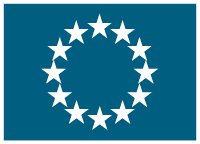Design, construction and validation of a prototype installation for a safe deposit of surplus mercury from the European industry.
(MERSADE)
Date du début: 1 oct. 2006,
Date de fin: 31 mars 2010
PROJET
TERMINÉ
Background
Launched in 2005, the EUâs Mercury Strategy has resulted in restrictions on the sale of measuring devices containing mercury, a ban on exports of mercury from the EU from 2011, and new rules on safe storage or disposal of surplus mercury. The strategy, containing 20 measures to reduce mercury emissions, cut supply and demand and protect against exposure, will radically affect the EU mercury market.
The mines of Almadén in South Central Spain (MAYASA) have for centuries provided a significant amount (about a third) of the worldâs total mercury. MAYASA, the project beneficiary, has been adapting its mining operations to take into account the new mercury strategy. In recent years (2001), MAYASA reached an agreement with Euro Chlor - an association of chlor-alkali process plant operators in Europe - to recover all excess mercury from the electrolytic cells of chlorine and caustic soda production. The beneficiary has also reduced its primary production to make use of secondary mercury from the chlor-alkali industry. The recovered mercury (about 4 000 tonnes) has been supplied to the international market.
Objectives
In line with the mercury strategy, the MERSADE project aimed to develop the technical support for a plan setting out the procedure for the packing and handling of mercury during transportation, and for the construction of a pilot installation for the deposit of any surplus mercury within the EU.
The aim was to ensure the safe deposit of mercury, meeting strict safety requirements, and without producing emissions once sealed. The project also aimed to minimise emissions during operational mining works, through a wide range of measures focussing on increased safety in design and construction, and through a programme of permanent vigilance, with an intervention plan if required. The project aimed to develop a stabilisation procedure for mercury by transforming it into a solid and more stable chemical state (i.e. HgS) and by encapsulating it into a S-polimeric matrix.
Results
Despite the difficulties and the complexity of the MERSADE project, its main goals and objectives were achieved and in some areas, the results exceeded expectations. The ideas and methodologies developed, provide a solution to the problem of storage of surplus mercury, not only for the EU countries, but also worldwide.
The project developed two prototype storage systems: one temporary and the other permanent.
The temporary storage keeps the waste in the form of metal mercury, securely stored as well as remotely and permanently monitored, in anticipation of possible future use; or for further processing and final stabilisation. With this aim, the project designed and built a pilot installation âMERSADE 50/50â for the safe storage of 50 tonnes of Mercury metal for at least 50 years. This meets highest safety standards ensuring:
- the tank material can withstand the abrasion of the mercury for more than 50-years;
- zero emissions once loaded and sealed; and
- minimum mercury emissions during the tank loading.
The installation is also equipped with a permanent and remote monitoring system and there is a plan for immediate intervention in necessary. The prototype for the temporary storage of metallic mercury was developed with the aim to define a BAT for mercury metal storage.
The final storage keeps the mercury in a stable solid state. The project developed a new technique to transform the liquid mercury into a solid and stable material that can be stored and that does not produce pollution. This technique stabilizes metallic mercury and wastes containing mercury by using a sulphur cement developed by the CSIC research.
Among the planned objectives, was an estimation of the size of the mercury storage problem in the EU i.e. an estimate of the amount of metal mercury existing in the EU in 2011, when the export ban enters into force. According to the project findings, there are approximately 8 000 - 8 500 tonnes of mercury (625 m3 in volume, or roughly a quarter of the size of an Olympic swimming pool) that need to be stored i.e. the EU-27 countries and Switzerland. Most of this comes from 14 countries.
Additionally, the project produced a study on the impact of mercury on the surrounding environment. The wider environmental results were extrapolated from the actual results of the environmental and working conditions within the current MAYASA warehouse. The study provides a useful guideline for industry and the scientific community.
The innovation of the project resides in the methodologies developed which respond to the EC requirements after the adoption of the Mercury Strategy in January 2005. The present Preparation Project has proved the effectiveness of an industrial installation for the safe storage of metallic mercury avoiding and minimising mercury fluxes to the environment. Thus, the development of this project permits to demonstrate all the requirements that have to be met for a safety storage of mercury metal without any negative impact in the environment and the health of people around. Additionally, a new method to stabilize the sulphur of mercury has been developed and patented.
For the future the beneficiary has prepared the launch of a research centre (Centro Tecnológico Nacional para la Descontaminación de Mercurio). They foresee to first project already drafted is construct a demonstration plant at semi-industrial scale in order to evaluate the technical and economical parameters of the stabilisation process of sulphur mercury as it has been patented within the project. So far, the initiative seems to be well accepted by companies that produce waste of mercury.




